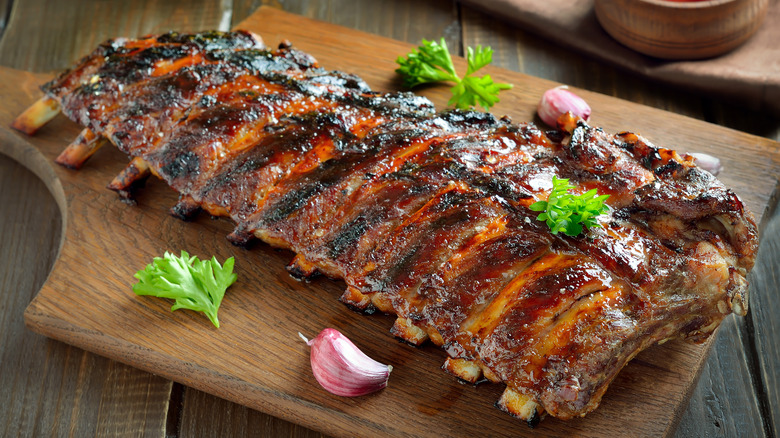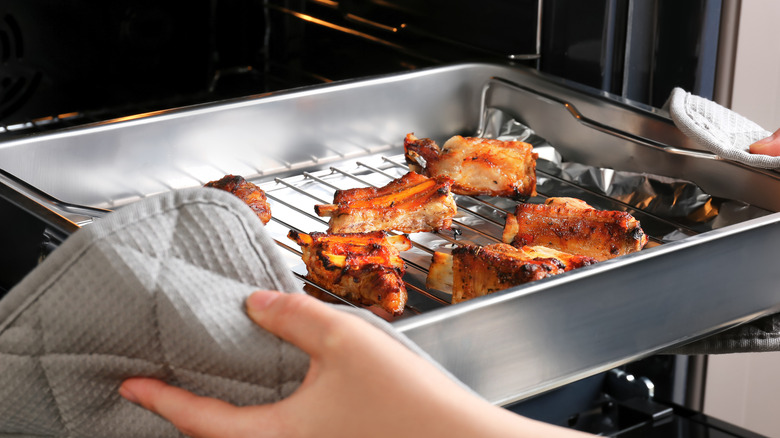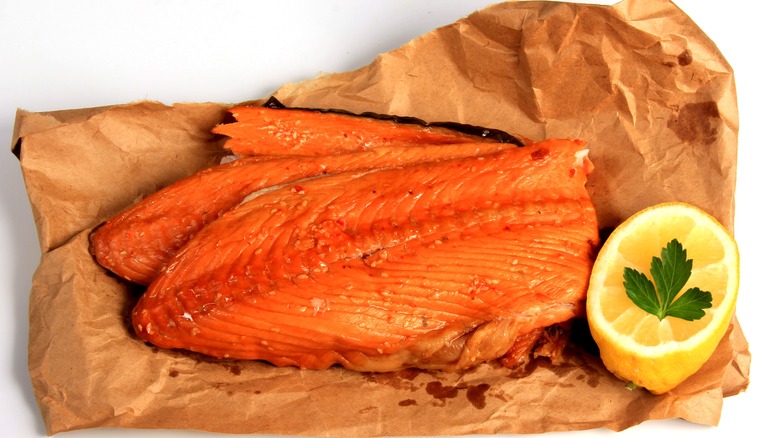It's Way Easier Than You'd Think To Smoke Meat In Your Oven
If you've ever been to a barbecue festival or spent a Saturday night watching a competitive barbecue cook-off, then you know that smoking meat is serious stuff. Not only does it take time, patience, and skill to create an award-winning barbecue, but it also takes the right equipment. People will invest in all types of technology to take their smoked chickens, briskets, ribs, and pork loins to the next level, from colossal-sized rigs hitched to the back of pickup trucks to state-of-the-art offset smokers and food-grade meat injectors.
But you don't need all the bells and whistles to end up with a satisfying piece of smoked meat. Barbecuing is one of the oldest and simplest forms of cooking. To master the craft does require an immense amount of knowledge — and, above all, practice — but even amateur cooks can make a pretty good go of it without having too much experience or specialized equipment. In fact, you don't need a smoker, grill, or even a backyard to make a platter of smoky, tender meat. All you need is a roasting pan, wood chips, tin foil, and a few hours of cooking time. So, if your oven can roast a Thanksgiving turkey, then you have what it takes to make some superb smoked meats.
How to smoke meat in your oven
The first step to home smoking is picking your cut of meat. You can go with chicken, ribs, pork butt, or beef brisket; however, the protein you choose will have an impact on the cooking time. Once you've selected your meat, you need to consider your wood chips. Hickory is one of the more popular varieties, adding that classic smoky note, but other options include mesquite (stronger and earthier than hickory), apple (a light smoke that's well-suited for poultry), and oak (mellow but good to mix with other woods).
Now to the smoking. Before you do anything, make sure your wood chips have been soaked in water for at least an hour, otherwise they might burn or catch fire. After the wood chips have been soaked, drain away most of the water, saving around half a cup to use later, and preheat the oven to 275 degrees Fahrenheit (possibly lower depending on the type and size of your chosen protein). Next, get out the roasting pan and scatter the soaked chips across the bottom, pouring in some of the reserved water so the chips are wet but not floating. Set the rack into the roasting pan and add your meat on top. Finally, cover with a slightly tented sheet of aluminum foil — this helps smoke circulate — and cook for around three hours or until the meat is tender. For a mellower smoke flavor, cover the meat with foil halfway through the cooking process.
What other foods should you try smoking?
Since you put in the effort to set up your home smoker, you might as well take advantage of it by smoking as many ingredients as you can! For an alternative to meat, first look towards the ocean. Both salmon and trout have big flavor profiles that can stand up to the kiss of smoke. Even crustaceans, like shrimp, can benefit from some of that campfire flavor, and they often take a fraction of the time to cook compared to a brisket or whole chicken. Plant-based proteins, like tofu, seitan, or veggie burgers, are pretty neutral in taste, so a touch of smoke and maybe some dry rub will go a long way.
You can also prepare side dishes using your home smoker. Don't sleep on vegetables, like zucchini, squash, eggplant, mushrooms, and bell peppers, which only take between an hour and 90 minutes at a low temperature to fully cook. And if you've already whipped up a dish of mac and cheese, put the whole baking dish in there and let those carbohydrates absorb that sweet, woodsy flavor. All that being said, the first step on your smoking journey is to assemble all the necessary equipment and practice your technique on some meat. After a few tries, you'll feel like a Texas pit master!


